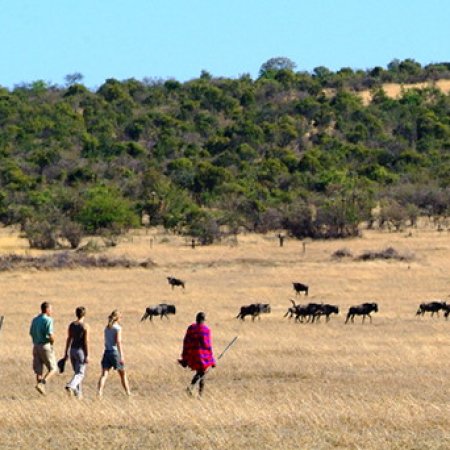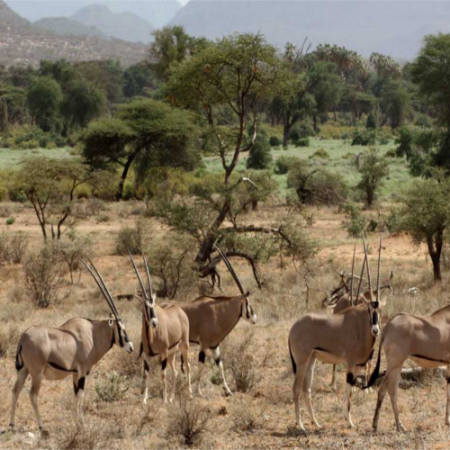5 Interesting Facts About The Maasai Community In Kenya
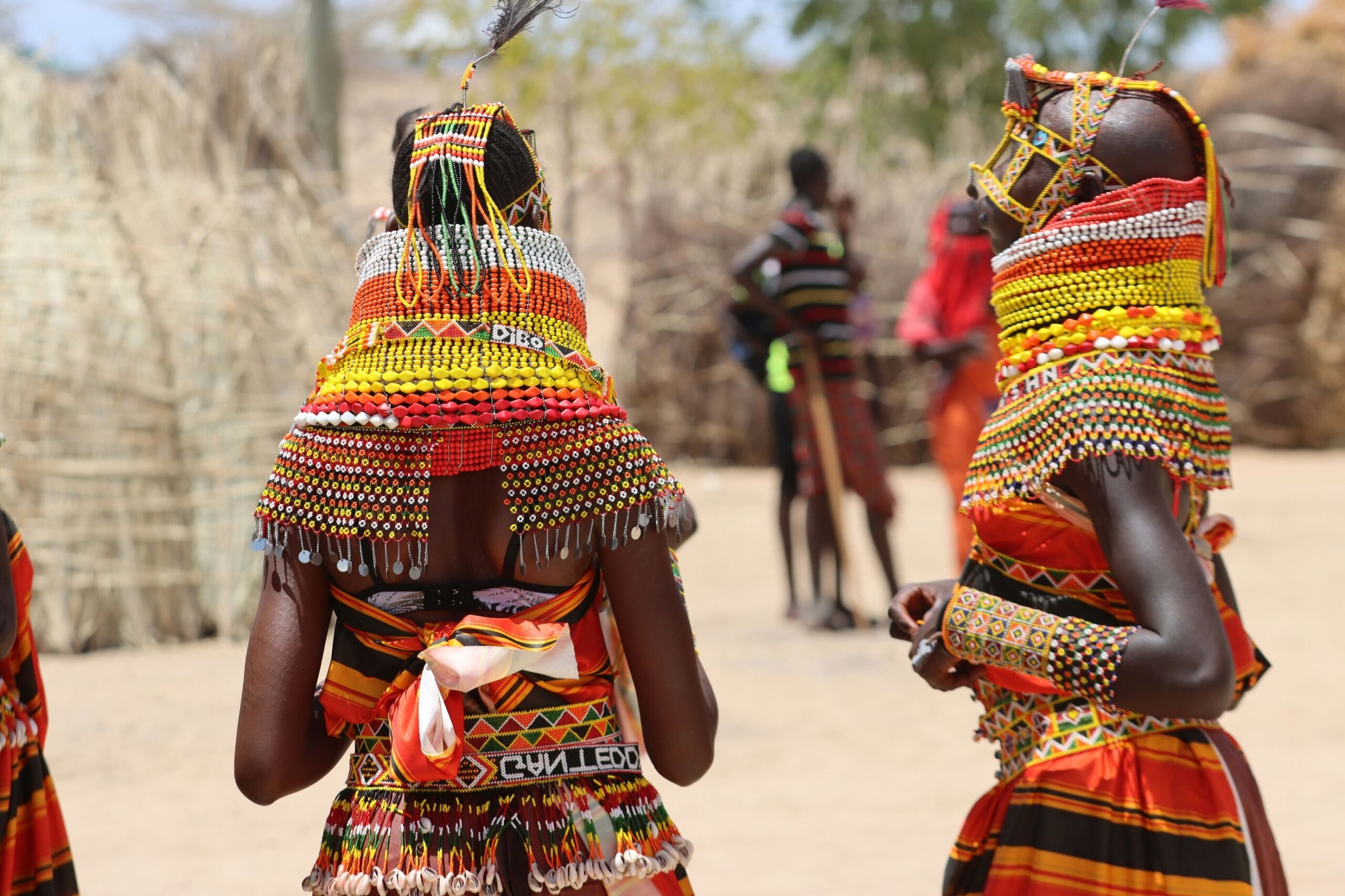
The Maasai community is one of the famous tribes found in Kenya and Tanzania, known for their traditional unique garments, ornaments accessories and customs. They mostly reside along the borders of famous national parks and reserves like the Masai Mara national reserve, Amboseli national park alongside others. Here are a few interesting facts about the Maasai community.
The Sacred Bond Between the Masai Community and Their Cattle
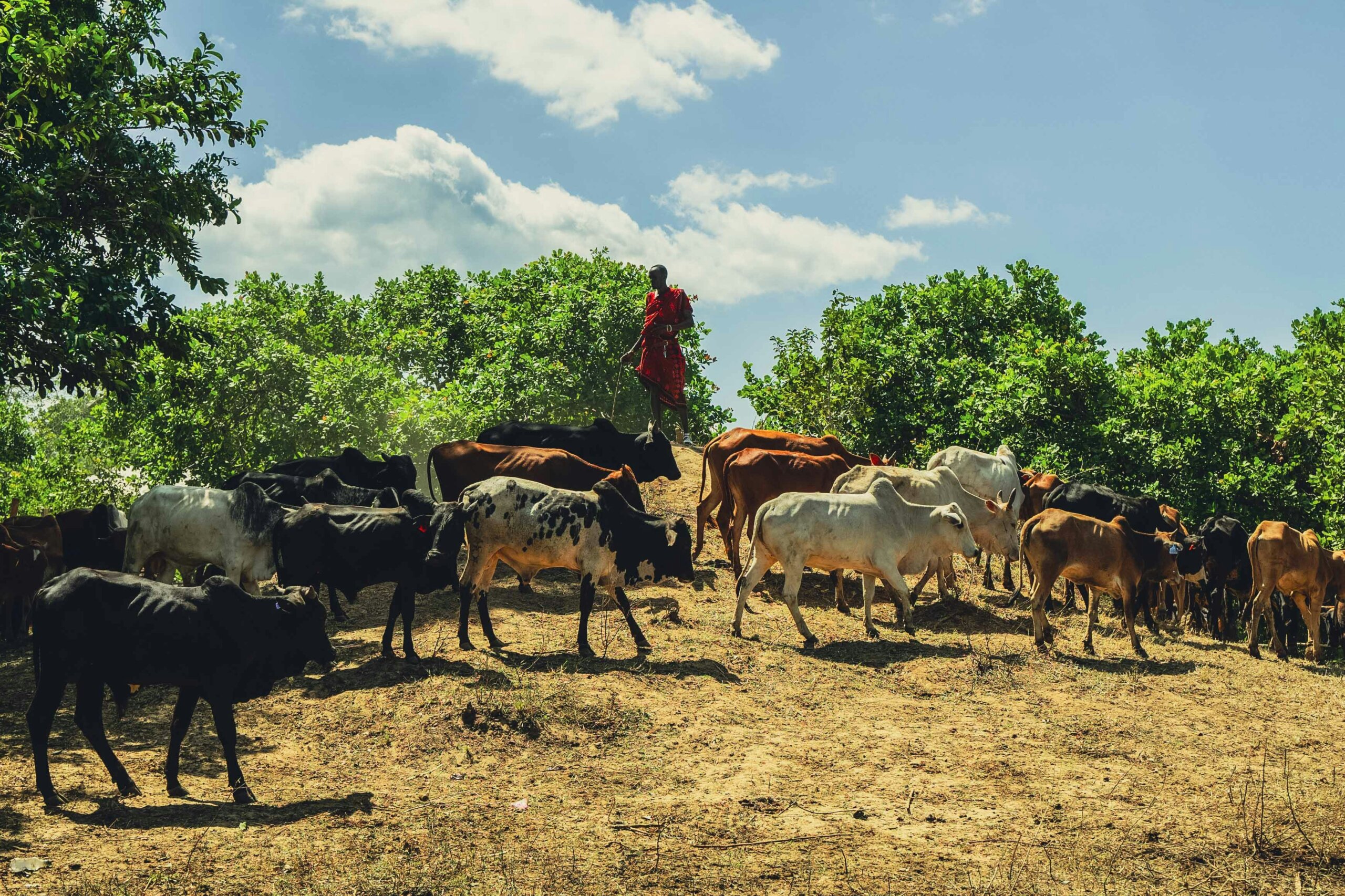
In Maasai culture, cattle are far more than just livestock, they are a divine gift. The Masai community believes that Enkai (the Maasai word for God) created cattle specifically for them, making all cows inherently theirs by divine right. Cattle hold deep spiritual, cultural, and economic significance. They are a symbol of wealth, status, and social identity within the community. Maasai families dedicate immense time and effort to acquiring and caring for their herds, as owning more cows elevates a family’s prestige and influence.
Beyond their economic value, cattle are used in bartering, dowry payments, and to forge alliances between families; cementing social bonds within the Masai society. The consumption of cow meat or blood is reserved for sacred ceremonies and special occasions, often as a way to connect with Enkai and honor important life events. This deep-rooted relationship with cattle is a cornerstone of Maasai traditions and a powerful symbol of their enduring cultural heritage.
The Iconic Maasai Shuka: A Symbol of Identity and Heritage
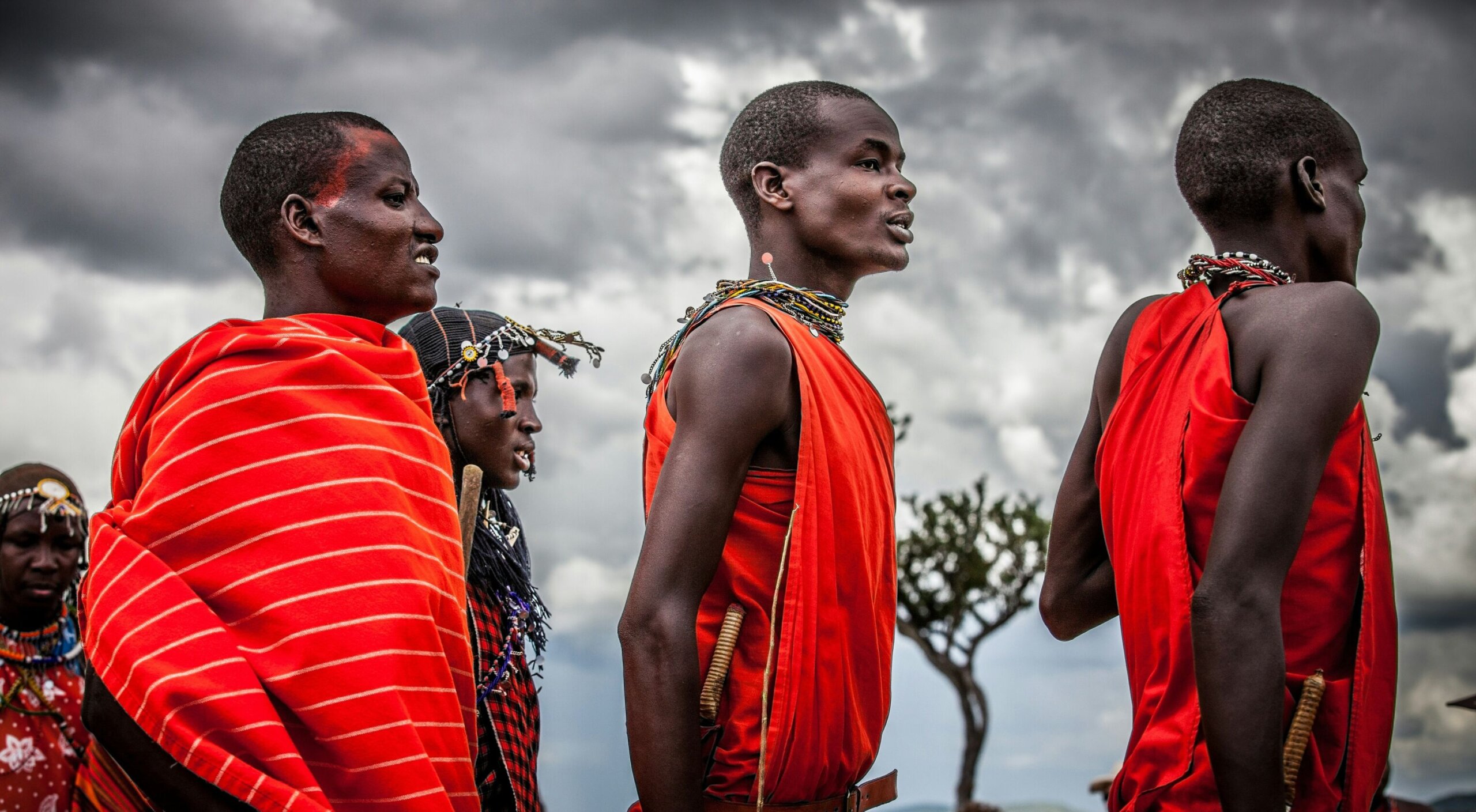
One can easily spot a Maasai from a distance, thanks to their distinctive Shuka, a vibrant, traditional cloth that is typically red with striking blue or black checks. Wrapped elegantly across the shoulders, the Maasai Shuka is more than just clothing; it is a powerful symbol of cultural pride and identity. In Maasai tradition, the color red holds deep meaning. It is believed to scare away lions and protect the wearer, reflecting the community’s deep connection with nature and their environment. This bold and beautiful garment has captured global attention, inspiring high-end fashion brands—including Louis Vuitton—to incorporate Maasai-inspired designs into their collections.
The Maasai Shuka is not only a practical garment suited for the savannah climate but also a globally recognized symbol of African culture, resilience, and style.
Maasai Ornaments, Bracelets & Accessories: A Story in Every Bead
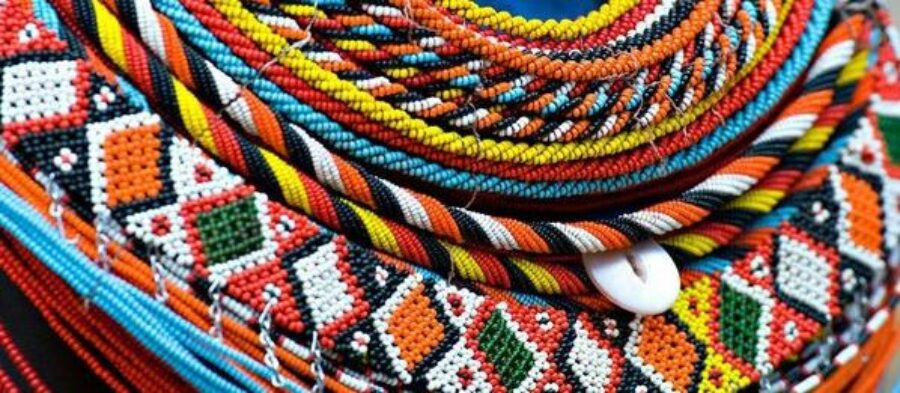
The Maasai community is world-renowned for its vibrant and symbolic traditional ornaments. Among the most iconic are the intricately beaded necklaces, bracelets, and ear accessories worn proudly by both Maasai men and women. These colorful adornments are not just decorative, they carry deep cultural significance. Each color, pattern, and style communicates something unique, from social status and age group to marital status and rites of passage. For example, men wear specific beadwork after important ceremonies like circumcision, marking their transition into adulthood.
The Maasai also stand out for their distinctive ear piercings and elongated earlobes, often adorned with handcrafted beaded earrings or metal jewelry. These accessories are a powerful expression of Maasai identity, heritage, and aesthetic tradition.
From the savannahs of Kenya and Tanzania to global fashion runways, Maasai beadwork continues to inspire with its beauty, meaning, and craftsmanship.
The Maasai Jumping Dance (Adumu): A Celebration of Strength and Courtship
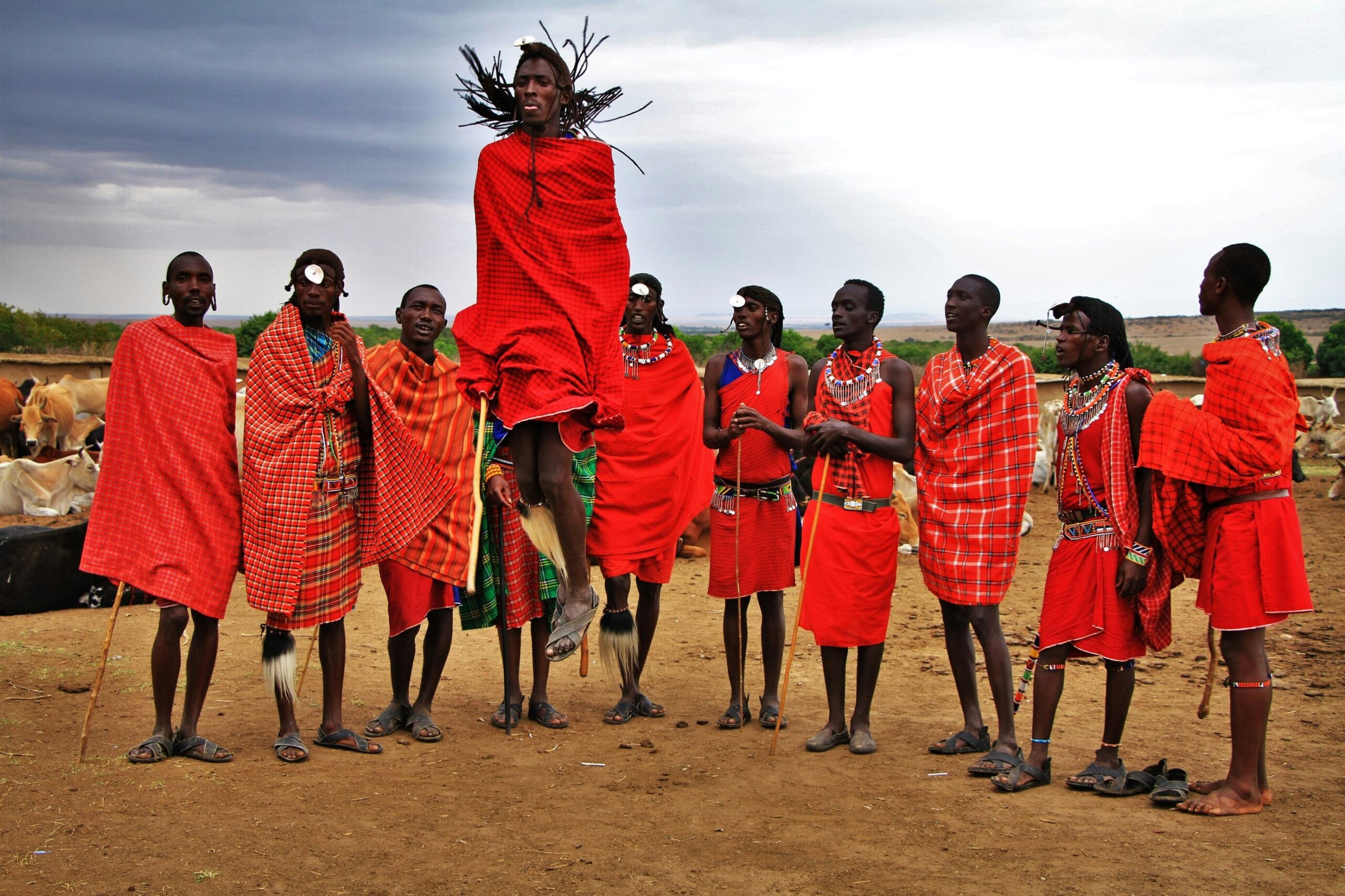
One of the most iconic and mesmerizing aspects of Maasai culture is the traditional jumping dance known as Adumu. Often performed during the Eunoto ceremony; a rite of passage for young warriors,this unique dance has become a global symbol of Maasai identity and cultural pride. In the Adumu, young Maasai warriors (Morans) form a semi-circle, chanting rhythmically in deep, melodic tones. One by one, each warrior steps forward and begins to jump as high as possible without letting their heels touch the ground. These powerful, gravity-defying jumps are often accompanied by energetic whoops and chants, creating an atmosphere charged with excitement.
The dance is not just a display of physical strength and endurance, it also serves as a form of courtship. Maasai women, often dressed in colorful beadwork and traditional attire, watch closely. Height, rhythm, and composure can influence a young man’s reputation and attractiveness as a potential husband.
The Maasai jumping dance is more than just a performance, it’s a ritual of identity, community, and tradition that continues to inspire awe both within and beyond East Africa.
Women as Builders: The Role of Maasai Women in Constructing Traditional Homes
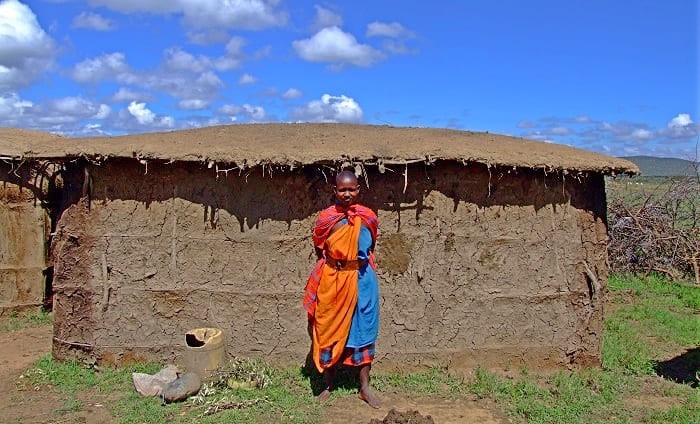
In Maasai culture, the task of building homes is uniquely entrusted to the women of the community. Contrary to what one might expect, Maasai men do not participate in house construction. Instead, Maasai women take full responsibility for designing and building the traditional huts known as Inkajijik (plural: Inkajijik, singular: Enkaj) in the Maa language.
These traditional Maasai houses are crafted from natural and locally sourced materials. The walls are made from a mixture of cow dung, mud, and ash, which is plastered over a framework of interwoven sticks. The roofs are constructed using grass and additional sticks, forming a low, circular structure that typically contains just one or two rooms. The design of the Inkajijik is practical and suited to the semi-nomadic lifestyle of the Maasai people, providing shelter from the harsh climate while being easy to repair or rebuild when families move.
This tradition highlights the strength, skill, and vital role of Maasai women in preserving their community’s way of life and architectural heritage.
The Maasai community is one of Africa’s most iconic and culturally rich groups, known for their vibrant traditions, deep-rooted customs, and unique way of life. From their colorful attire and intricate beadwork to their traditional dances and architectural heritage, the Maasai offer a powerful glimpse into authentic East African culture.
Want to experience the Maasai culture up close?
Book with us for an unforgettable cultural journey! Our expertly guided tours offer you the chance to visit Maasai villages, witness traditional ceremonies, and learn directly from community members—all while exploring the breathtaking landscapes of Kenya.

